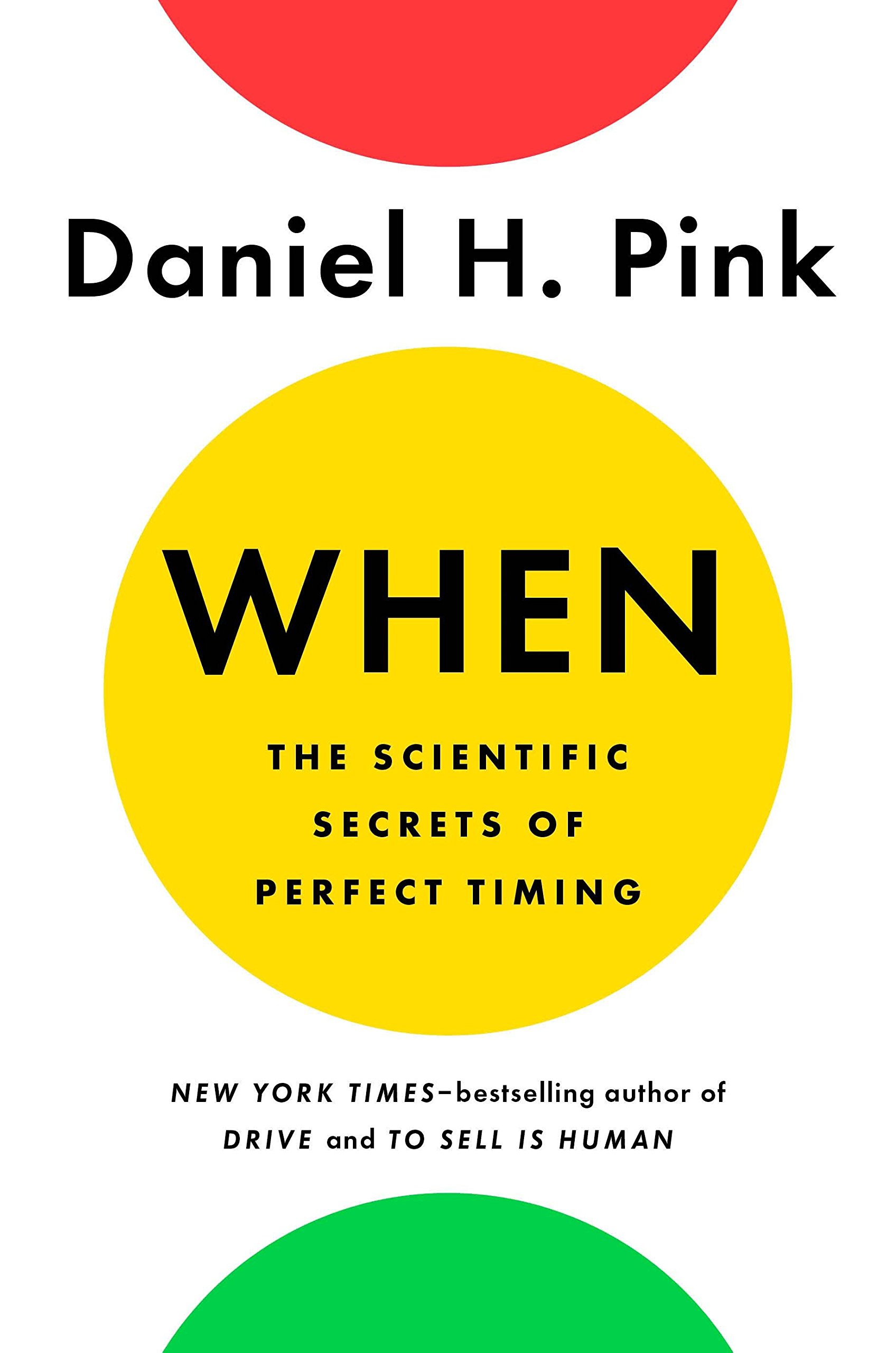“We simply don’t take issues of when as seriously as we take questions of what” (pg. 92).
“mental keeness, as shown by rationally evaluating evidence, was greater early in the day. And mental squishiness, as evidenced by resorting to stereotypes, increased as the day wore on” (pg 21).
The most unproductive moment of the day is 2:55 (pg 55).
Breaks:
“hourly five-minute walking breaks boosted energy levels, sharpened focus, and “improved mood throughout the day and reduced feelings of fatigue in the late afternoon. These ‘microbursts of activity,’ as researchers call them, were also more effective than a single thirty-minute walking break - so much so that the researchers suggest that organizations ‘introduce physical active breaks during the workday routine.’ Regular short walking breaks in the workplace also increase motivation and concentration and enhance creativity” (pg 61) . . . So if you’re looking for the Platonic ideal of a restorative break, the perfect combination of scarf, hat, and gloves to insulate yourself from the cold breath of the afternoon, consider a short walk outside with a friend during which you discuss something other than work” (pg 63).
Lunch:
The most powerful lunch breaks have two key ingredients - autonomy and detachment. Autonomy - exercising some control over what you do, how you do it, when you do it, and whom you do it with - is critical for high performance, especially on complex tasks. But it’s equally crucial when we take breaks from complex tasks. ‘The extent to which employees can determine how they utilize their lunch breaks may be just as important as what employees do during their lunch’” (pg 65).
Adolescents who get less sleep than they need are at higher risk for depression, suicide, substance abuse, and car crashes . . . ‘Evidence also links short sleep duration with obesity and a weakened immune system’” (pg. 90).
Landmarkers:
“Temporal landmarks interrupt attention to day-to-day minutiae, causing people to take a big picture view of their lives and thus focus on achieving their goals . . . The implications of the fresh start effect, like the forces that propel it, are also personal and social. Individuals who get off to a stumbling start - at a new job, on an important project, or in trying to improve their health - can alter their course by using a temporal landmark to start again. People can strategically create turning points in their personal histories” (pg 96).
Midpoints:
This made me think of FedEx days that Mr. Pink talks about in Drive. “Groups didn’t march toward their goals at a steady, even pace. Instead, they spent considerable time accomplishing almost nothing - until they experienced a surge of activity that always came at the temporal midpoint of a project” (pg 126).
Endings:
“People are willing to override a relatively long period of one kind of behavior with a relatively short period of another just because it occurred at the end of one’s life. This ‘end of life bias’ suggests that we believe people’s true selves are revealed at the end” (pg 155).
“Every Pixar movie has its protagonist achieving the goal he wants only to realize it is not what the protagonist needs. Typically, this leads the protagonist to let go of what he wants (a house, the Piston Cup, Andy) to get what he needs (a true yet unlikely companion; real friends; a lifetime together with friends)” (pg 163).
“The best endings don’t leave us happy. Instead, they produce something richer - a rush of unexpected insight, a fleeting moment of transcendence, the possibility that by discarding what we wanted we’ve gotten what we need” (pg 164).
Synching Fast and Slow:
“Groups must synchronize on three levels - to the boss, to the tribe, and to the heart” (pg 181) . . . after individuals synch to the boss, the external standard that sets the pace of their work, they must sync to the tribe - to one another. That requires a deep sense of belonging” (pg 189) . . . which “boosts job satisfaction and perfomance” (pg 191).
Thinking in Tenses:
Nostalgia is a “bittersweet but predominantly positive and fundamentally social emotion. Thinking in the past tense offers a window into the intrinsic self, a portal to who we really are. It makes the present meaningful” (pg 214).
Grade: A+
On the Better Leaders Better Schools podcast, Daniel Pink claims that out of all his works, this book is the most influential on his day-to-day life. I would have to agree.
For more on . . .


